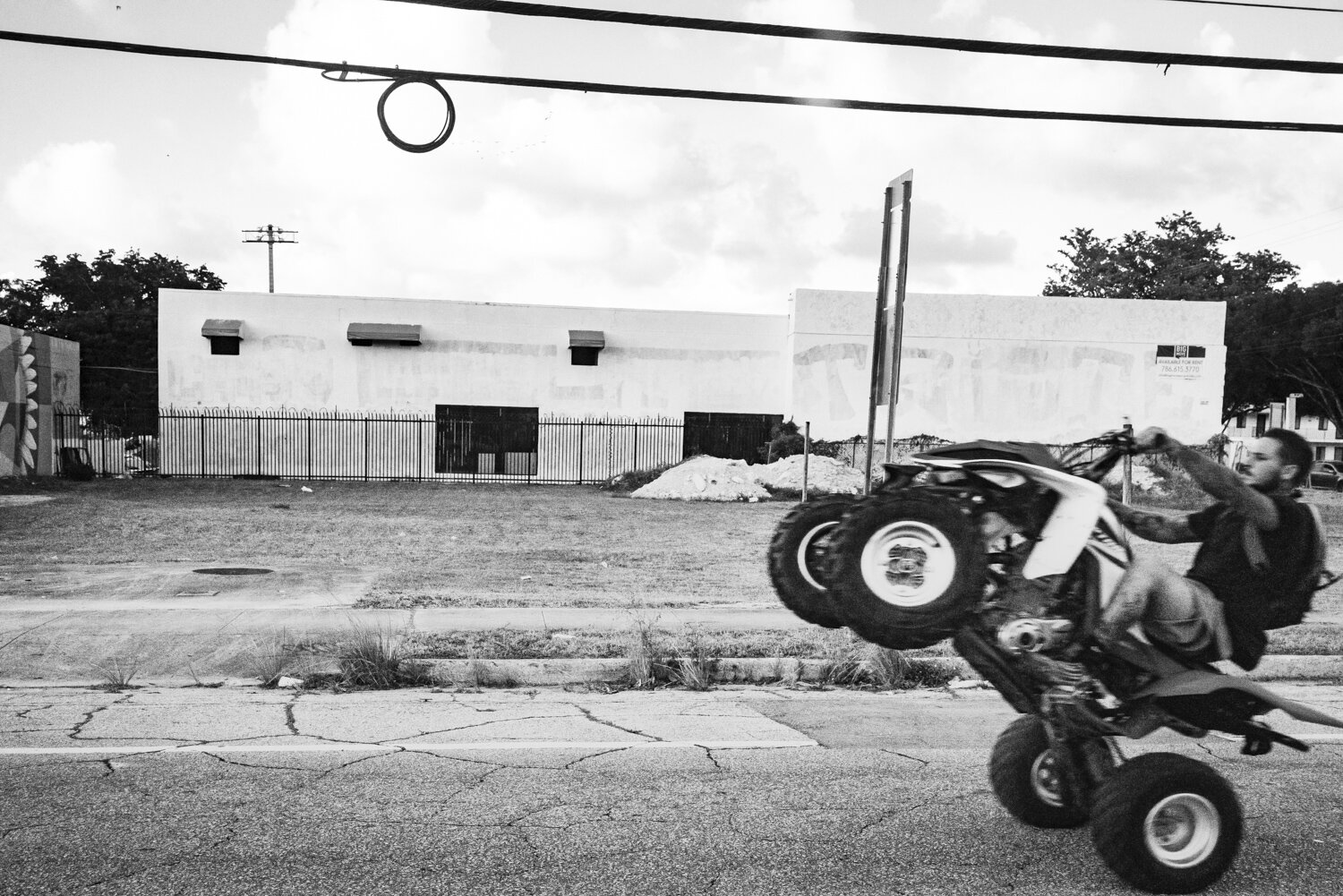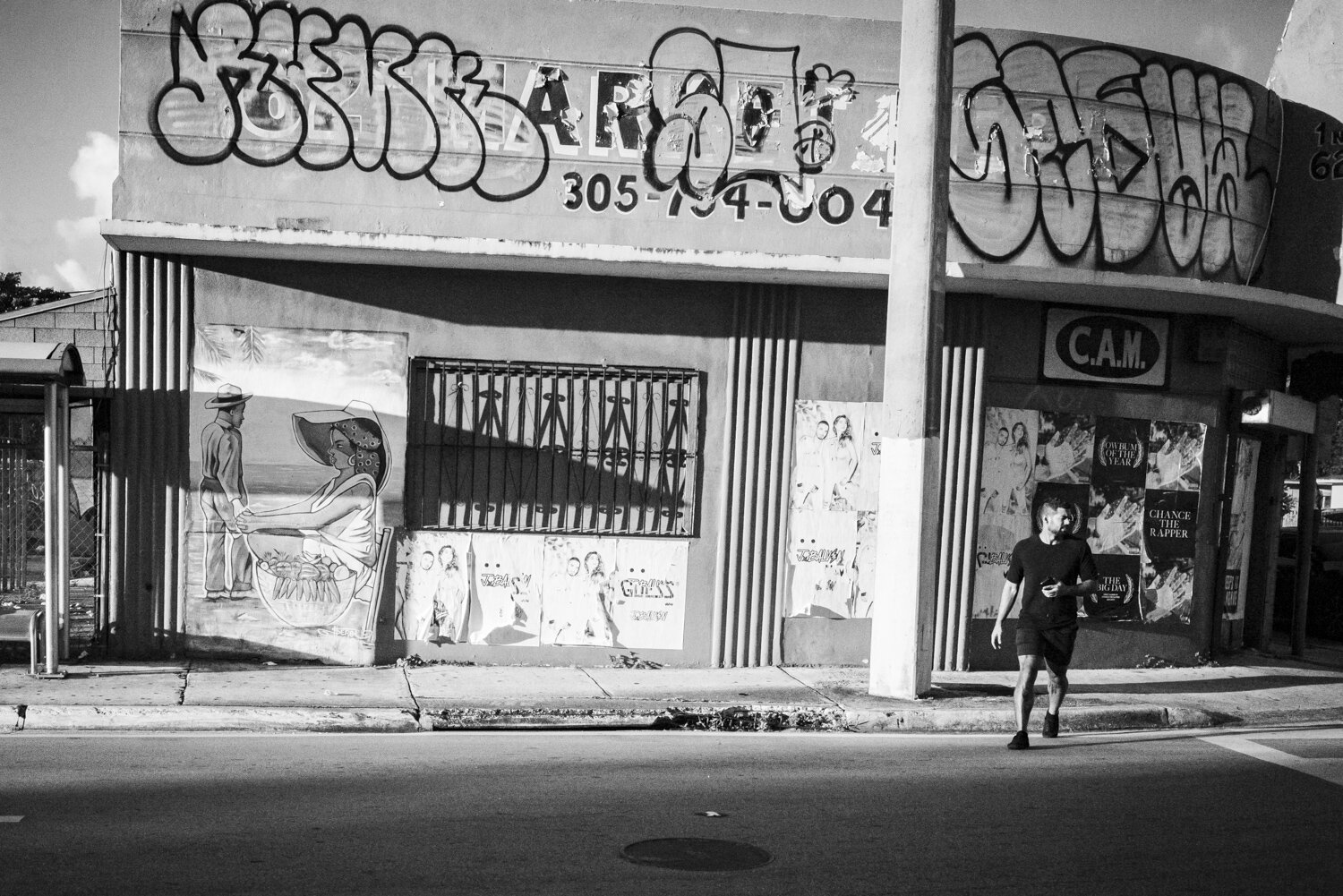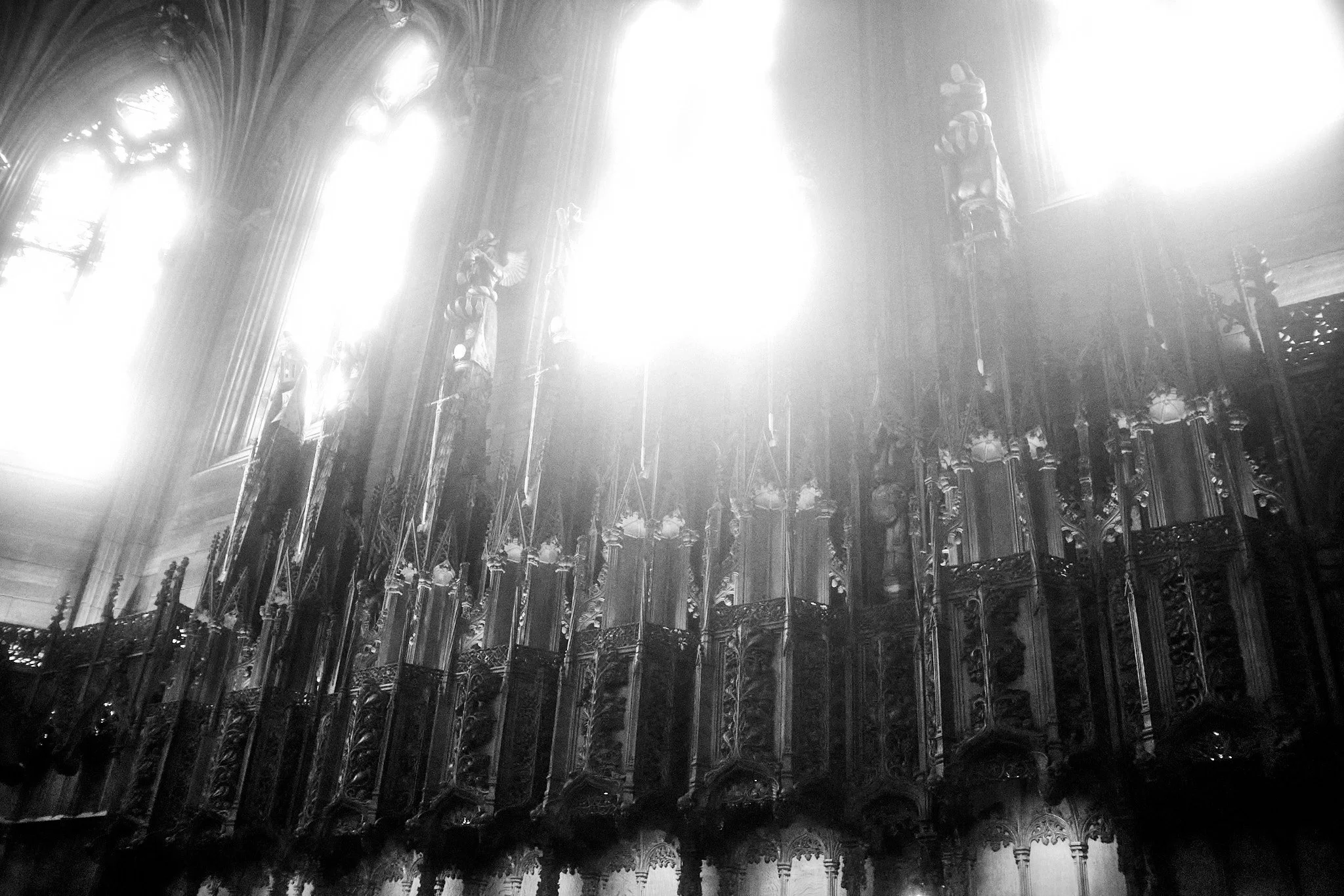Driv(ing)-By(e): Official Business
25°48'19.9"N 80°12'26.5"W
I was at stopped at least 10 cars back from the stop light and the light had just turned green. The line of cars was slowly starting to move in the fits and starts usually indicating drivers were distracted by their phones. As is the norm in Miami, this is when pedestrians will step into the line of cars and cross the street before the oncoming traffic makes it through the intersection and up to speed. I happen to notice a police officer starting across the street from the darkness of a side street just before I released the brake…
Driv(ing)-By(e) is a title that references not just the physical creation of the images, but also my past as a forensic photographer. The physical creation of the images was mostly done while sitting in traffic. My drive home from approximately NW 7th ave and 14th street takes anywhere from 45 min to an hour as navigate through side streets and cut up and down residential streets to avoid major intersections, accidents, or multiple blocks of stop lights. There isn’t any easy, major artery from north to south or east to west that takes me directly to where I need to be. Inevitably, I still end up in bumper to bumper traffic, inching along. Stationed in the center console, close at hand, is my camera.
There are two methods I use for shooting. While at a stop light, I will look for interesting islands of light and any action that may be coming into or out of the island. Being stopped, there is time to focus, compose and wait until the light changes and traffic begins to move again. Even then, I always have a few more seconds as most drivers finish the text message or other phone-related activity. I refer to these images as, Driving-By; I just happened to have stopped for a moment. The other method is more “shooting from the hip.” Since I am using a short focal length, 35mm lens, I don’t have to worry about minimal focal distance, depth of field or framing. I just mount the camera, activate the auto focus and once it ‘beeps’ start firing the shutter as I feel the timing; never looking through the viewfinder or back screen… aka, “I’m Driving,bye!'“ Once I get the images into post-production, I see if I got anything worth editing.
Finally, the title is an ominous reference to “drive-by shootings.” As a forensic photography intern at the Miami-Dade County Medical Examiner’s office during 2003, I photographed over 700 autopsies. Quite a few were of victims from drive-by shootings and many were burned into both film and memory. In some sense, there is something at once familiar and distant about the areas I drive through. To be sure, none of these locations were actual crime scenes that I was present to photograph, but I do drive past the Medical Examiner’s office many days during the drive home.
Driv(ing)-By(e): Artist Statement
25°50'57.2"N 80°11'48.9"W
Driv(ing)-By(e), Artist Statement:
Initial Edit: August 2020
Like all big cities, Miami has residents that are extremely wealthy and those that are extremely poor. More than other areas I have lived in, San Francisco and Oakland for example, Miami’s population is more transient with both their wealth and their location. From block to block the feel of the city and the texture of the underlying social currents ebb and wane. In residential areas north of Midtown and between Northwest 2nd Avenue and North Miami Avenue, foot traffic at night seems to loosely flow inversely to the areas of gentrification, which changes from block to block, especially from west to east toward Biscayne Bay and the major areas of affluent and wealthy residents.
But even as many Miami neighborhoods are gentrified, the one thing that doesn’t seem to change is the supporting structures of the neighborhoods. For example, convenience stores, check cashing and payday loan stores, salons and fast food chains still dominate over grocery chains, banks, large retail chains and fine dining. Some may see these establishments as the last great bastion of the “Mom and Pop” American dream, but when out of balance in a poor neighborhood, there is a dramatic and well-studied impact on the community. Convenience stores often lack of fresh fruits and vegetables which don’t compete for floor space or sales units with the frozen burritos and salty snack foods. Lacking access to financial services often leads to utilizing check cashing and payday loan stores and the associated predatory fees and interest rates. Miami, which is hardly a “walkable city”, is famous for its inadequate public bus system. Without the ability to drive to a bank or grocery store or retail center to take advantage of lower fees or more variety and promotional pricing, the cycle of convenience is perpetuated by necessity and absorbs a larger ratio of an individual’s income than for a “non-poor” person with access to institutional resources and mobility.
Unlike metropolitan areas where the majority of poor are white, Miami is financially and racially segregated with large areas of poor - and working poor - Black and Latino populations which by every measure are hit harder than financially similar white populations. Population Health indicators are the canary-in-the-coalmine for the health and welfare of poor populations. The effects are reflected in almost every measure of population health: Heart disease, diabetes, access to primary care, access to prenatal care, gun violence. In all of these categories, Miami ranks among the worst.
Over the last couple of years I have become particularly reflective of what I see as I drive through the neighborhoods between my job at the Jackson / UHealth medical complex to my home, 7 miles away in one of the more affluent Miami suburbs, Miami Shores. This body of work is largely the confluence of experiences such as completing a Master’s degree specializing in Healthcare Administration, the Coronavirus Pandemic, fatherhood, employment in medical IT, watching and discussing the “Black Lives Matter” revolution, my training and experience as a photographer. The process of creating these images from the solitude of my SUV as I drove through theses social landscapes was not lost on me as I was reflecting on the other experiences.
Since March 2020, like many others, I have been working from home and rarely leaving my house. By circumstance, the shooting for this project has been completed. Since then, the areas these images were shot in have been the epicenter of the Black Lives Matter protests in and around Miami. Unfortunately, I have had very little interaction with those protests with the exception of news reports and one Saturday protest that stopped traffic along I-95 while I was traveling home from a photo assignment.
First and foremost, I recognize how fortunate I am to be able to continue working from the safety of my home when so many others, including friends and family, can not. As I am not a racial minority nor working poor, I do recognize my figurative lens is specifically “polarized” to my good fortune. I have not and cannot experience the lives of “others” visible in these images. These images and reflections are not intended to speak for anyone or anything but my own process of understanding my place in the social fabric and my willingness to accept I have ingrained prejudices that need to change.
The subsequent blog postings are a living, changing document of my reactions to the social landscapes I pass through without much interaction, but not without reflection. I expect my thoughts, feelings, reflections and reactions to change over time. To process and internalize my reactions, each image will be the subject of reflection as a blog post. I intend to edit and revise these reflections over time, specifically in response to how my thinking changes. Arrogant? Maybe. But it is also honest; if not a bit ambitious. Even as I write this statement and prepare remarks for the other images, I have found my reaction to the images changing. More to come…
Revisions:
Miami Streets - Driv(ing)-By(e) outtakes
Sometimes the drive home feels more like a game of “Frogger” than a commute.
New Work - B&W Flora
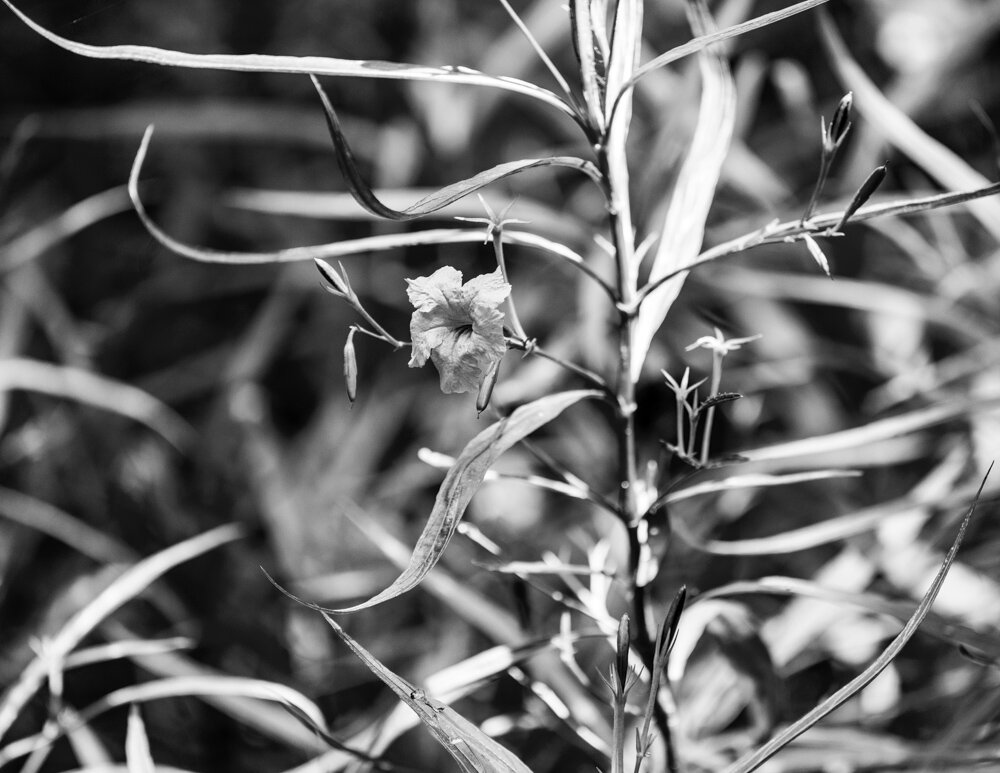

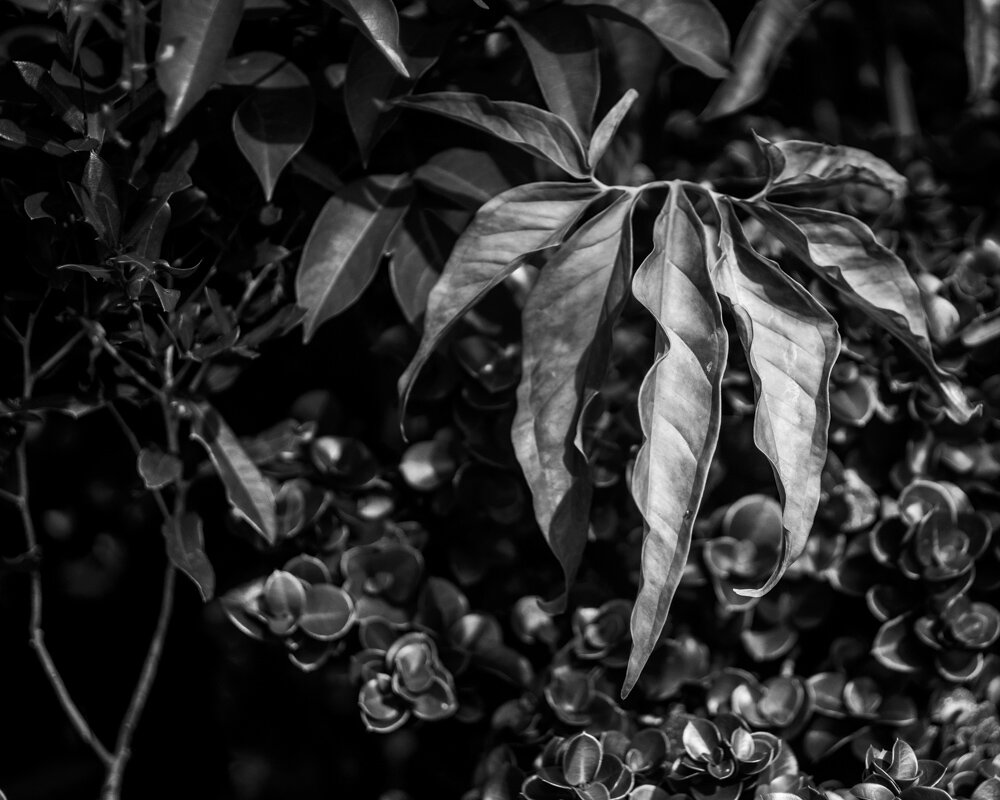
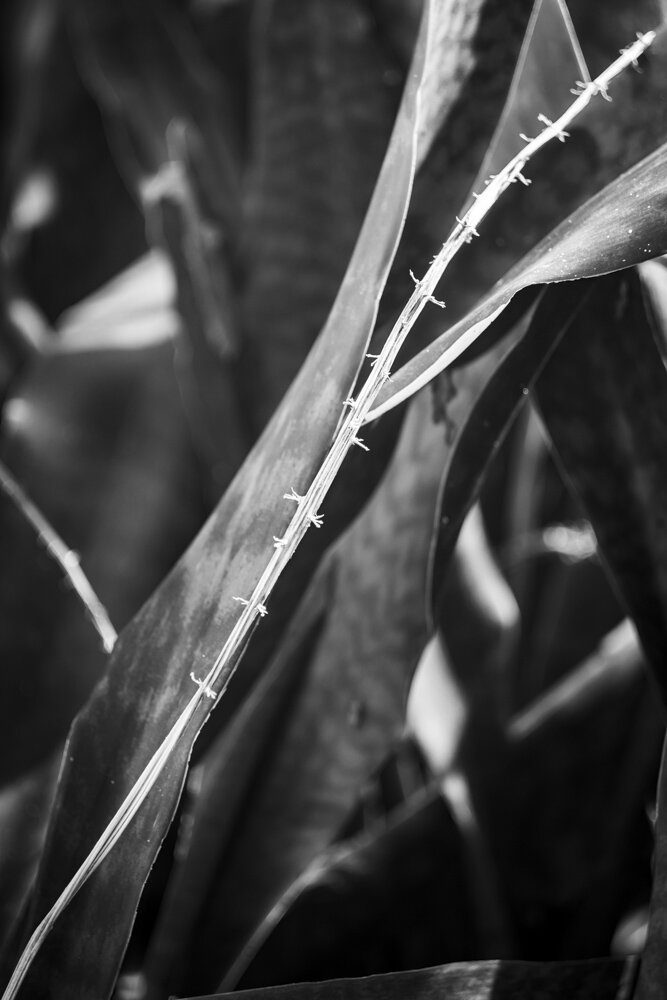
I always enjoy exploring the living world around me through my camera, although it’s often never enough time. Now and again, I am fortunate to explore through an unusual lens such as the A.Schacht Travenar F2.8. I am really taken by the bokeh from the Travenar, especially as adapted to my Sony A7R3.
More to come…
St Giles Cathedral, Edinburgh


